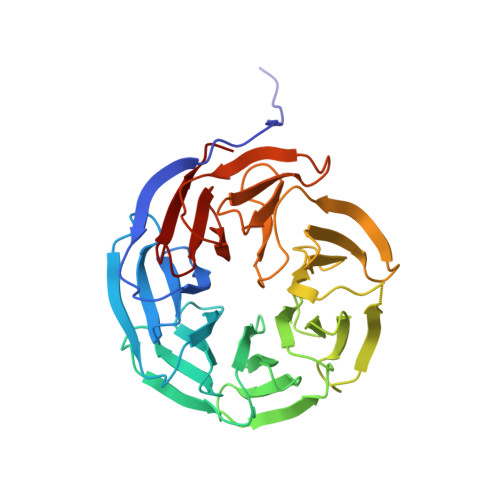Structure-Based Discovery of Potent, Orally Bioavailable Benzoxazepinone-Based WD Repeat Domain 5 Inhibitors.
Teuscher, K.B., Mills, J.J., Tian, J., Han, C., Meyers, K.M., Sai, J., South, T.M., Crow, M.M., Van Meveren, M., Sensintaffar, J.L., Zhao, B., Amporndanai, K., Moore, W.J., Stott, G.M., Tansey, W.P., Lee, T., Fesik, S.W.(2023) J Med Chem 66: 16783-16806
- PubMed: 38085679
- DOI: https://doi.org/10.1021/acs.jmedchem.3c01529
- Primary Citation of Related Structures:
8UJY - PubMed Abstract:
The chromatin-associated protein WDR5 (WD repeat domain 5) is an essential cofactor for MYC and a conserved regulator of ribosome protein gene transcription. It is also a high-profile target for anti-cancer drug discovery, with proposed utility against both solid and hematological malignancies. We have previously discovered potent dihydroisoquinolinone-based WDR5 WIN-site inhibitors with demonstrated efficacy and safety in animal models. In this study, we sought to optimize the bicyclic core to discover a novel series of WDR5 WIN-site inhibitors with improved potency and physicochemical properties. We identified the 3,4-dihydrobenzo[ f ][1,4]oxazepin-5(2 H )-one core as an alternative scaffold for potent WDR5 inhibitors. Additionally, we used X-ray structural analysis to design partially saturated bicyclic P 7 units. These benzoxazepinone-based inhibitors exhibited increased cellular potency and selectivity and favorable physicochemical properties compared to our best-in-class dihydroisoquinolinone-based counterparts. This study opens avenues to discover more advanced WDR5 WIN-site inhibitors and supports their development as novel anti-cancer therapeutics.
- Molecular Design and Synthesis Center, Vanderbilt Institute of Chemical Biology, Nashville, Tennessee 37232-0142, United States.
Organizational Affiliation:

















